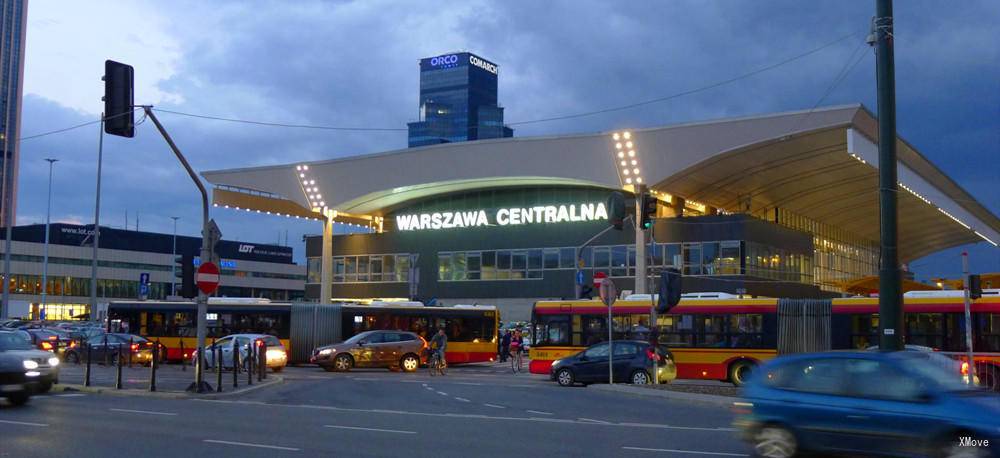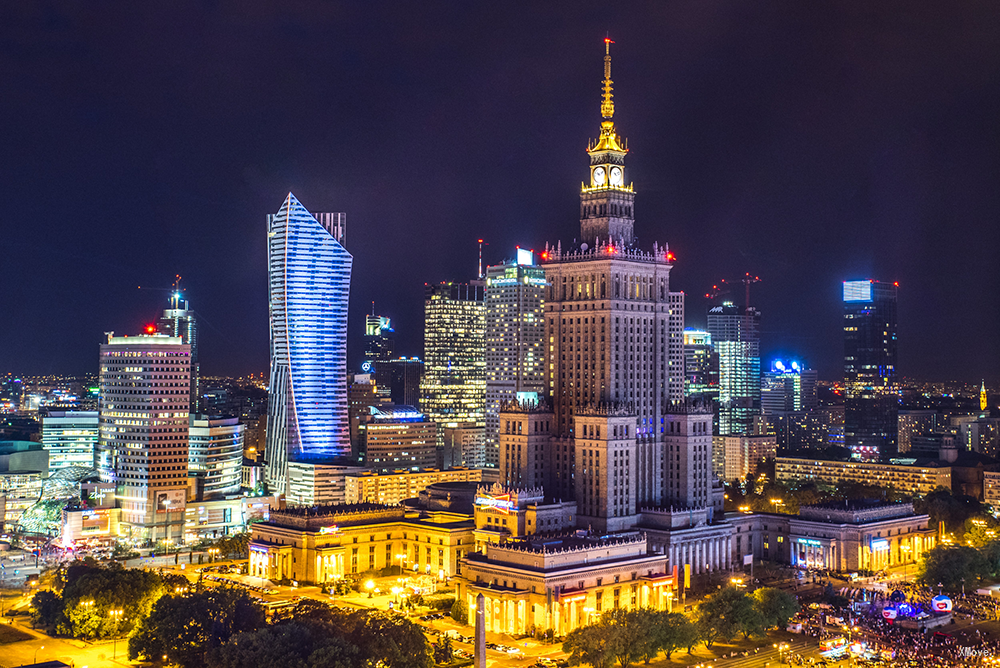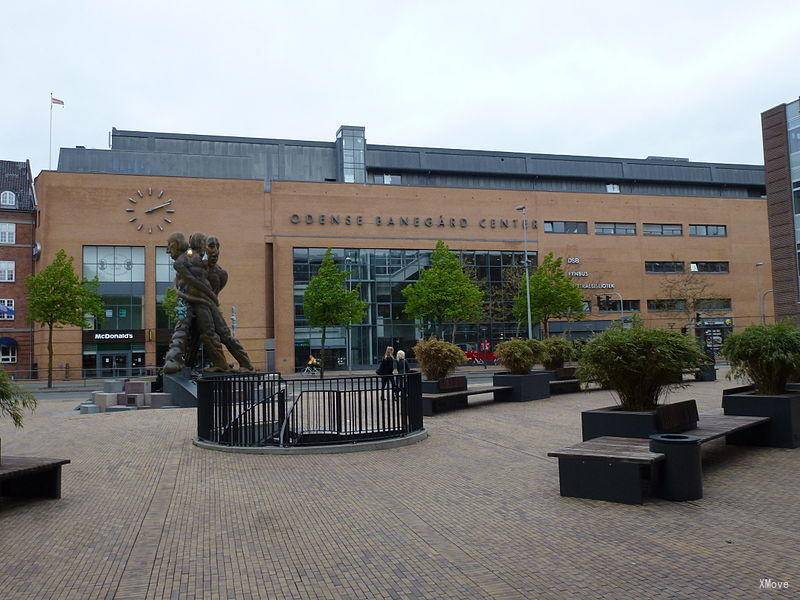Odense St to Warszawa Central Station: Trains, Buses, Fares, Today's Connections, Routes, Duration, Types of Trains, Station Guides, Tips, Journey
Denmark Train Tickets
Scan QR code, download G2Rail App to see Odense St's more live update, station guide, plan and photos



Train schedule Odense St to Warszawa Central Station(Warszawa Centralna)
Popular train routes departing from Odense St
* Bratislava Hlavná Stanica(Bratislava Hl.St.)
* Rostock Central(Rostock Hbf)
* Essen Central(Essen Hbf)
* Vejle St
* Mannheim Central(Mannheim Hbf)
* Karlsruhe Central(Karlsruhe Hbf)
* Goettingen(Göttingen)
Popular train routes arriving in Odense St
* Amersfoort
* Aarhus
* Jessen(Elster)
* Bratislava Hlavná Stanica(Bratislava Hl.St.)
* Bremerhaven Central(Bremerhaven Hbf)
* Aachen Central(Aachen Hbf)
* Hamburg Central(Hamburg Hbf)
Popular train routes departing from Warszawa Central Station(Warszawa Centralna)
* Sopot
* Gdansk Glowny(Gdańsk Główny)
* Poznan Gl.
* Frankfurt Central(Frankfurt(Main)Hbf)
* Prague Central(Praha Hlavní Nádraží (Prag Hl. N.))
* Poznan Gl.
* Wroclaw Central Station(Wroclaw Glowny)
Popular train routes arriving in Warszawa Central Station(Warszawa Centralna)
* Berlin Hbf (S Bahn)
* Budapest Central(Budapest Keleti Pályaudva)
* Krakow Głowny(Kraków Główny)
* Dresden Central(Dresden Hbf)
* Frankfurt Central(Frankfurt(Main)Hbf)
* Garmisch Partenkirchen
* Minsk
Warszawa Central Station
All long-distance trains stop at Warsaw Central Station, making it easy to reach all parts of Warsaw and other cities in Poland. International routes can be discounted between 30% and 60% if booked in advance. The most common train in Poland is the TLK, which is cheap and not very slow. The IR train is the cheapest train in Poland, but it is very uncomfortable and very slow, and there are only a few routes. Trains such as IC, ICE and EC are more comfortable and the price is slightly higher. Drinks and snacks will be provided free of charge on long-distance trains.
Warsaw Central Station has 4 stations, 8 tracks, the line is Polish Railway Line 2, Polish: Linia kolejowa nr 2, running line: Warsaw – Terespol line.
Warszawa Central Station - Station Guide | Departures and Arrivals | Popular Routes

Odense (, also US: , Danish: [ˈoðˀn̩sə] ) is the third-largest city in Denmark. It has a population of 178,210 as of January 2016, and is the main city of the island of Funen. By road, Odense is located 45 kilometres (28 mi) north of Svendborg, 144 kilometres (89 mi) to the south of Aarhus and 167 kilometres (104 mi) to the southwest of Copenhagen. The city is the seat of Odense Municipality and was the seat of Odense County until 1970, and Funen County from 1970 until 1 January 2007, when Funen County became part of the Region of Southern Denmark. Odense has close associations with Hans Christian Andersen who is remembered above all for his fairy tales. He was born in the city in 1805 and spent his childhood years there. There has been human settlement in the Odense area for over 4,000 years, although the name was not mentioned in writing until 988, and by 1070, it had already grown into a thriving city. Canute IV of Denmark, generally considered to be the last Viking king, was murdered by unruly peasants in Odense's St Alban's Priory on 10 July 1086. Although the city was burned in 1249 following a royal rivalry, it quickly recovered and flourished as a centre of commerce in the Middle Ages. After a period of decline, large-scale plans for development were made during the 18th century, which led to the rebuilding of Odense Palace and the building of a canal to the Port of Odense, facilitating trade. In 1865, one of the largest railway terminals in Denmark was built, further increasing the population and commerce, and by 1900, Odense had reached a population of 35,000. Odense's Odinstårnet was one of the tallest towers in Europe when built in 1935 but was destroyed by the Nazis during World War II. The University of Southern Denmark was established in 1966. In the present day, Odense remains the commercial hub of Funen, and has a notable shopping district with a diversity of stores. Several major industries are located in the city including the Albani Brewery and GASA, Denmark's major dealer in vegetables, fruits and flowers. The city is home to Odense Palace, erected by King Frederik IV who died there in 1730, the Odense Theatre, the Odense Symphony Orchestra, and the Hans Christian Andersen Museum, situated in the house that was the birthplace of Hans Christian Andersen. In sports, Odense has a number of football clubs including OB, BM, B1909, and B1913, the Odense Bulldogs professional ice hockey team, and the city also hosts the H.C. Andersen Marathon. Odense is served by Hans Christian Andersen Airport and Odense station, which lies on the line between Copenhagen and the Jutland peninsula.
Odense - Guide, Attractions, Tours, Sightseeings | Train from/to Odense | Popular RoutesWarszawa
City Overview
Warsaw is the capital and largest city of Poland. It is located on both sides of the Wisła River, about 350 km from the Baltic Sea and the Carpathian Mountains. The famous Warsaw Convention was signed in Warsaw. The city is also the capital of the province of Masovian, with many industries (manufacturing, steel, electrical engineering, automation), 66 institutions of higher learning (including Warsaw University), and more than 30 theatres.
Warsaw is currently divided into 18 administrative districts, and the entire city is divided into two by the Wisła. The economy and public security in the west of the river are better than those in Hedong. The Śródmieście district is the city centre of Warsaw. There are a few high-rise buildings. The Warsaw Central Railway Station and the Warsaw Central Metro Station as well as the major banking malls and supermarkets can be found here. Compared with other European countries, Warsaw is very wide and there are not many attractions, so the sightseeing spots are scattered and need to travel by car. There are many bus routes in Poland, and you can basically reach the entrance of the scenic spot directly, so you don't have to go too far. Warsaw was completely destroyed during World War II, so even the old town of Warsaw is reborn.
Must visit attractions
- ##### Warsaw Old Town Stare Miasto
The old buildings in Warsaw are all restored and reconstructed, but they do not affect people's appreciation of its beauty. The Old Town contains many attractions such as the Mermaid Statue, the Royal Palace, the Old Town Square, and the Curie Museum. In the old town, you can spend half a day slowly admiring the surrounding buildings and sampling local specialties. (Image courtesy of wiki, CC copyright, author Marek and Ewa Wojciechowscy)
Transportation: Metro: Get off at the Metro Ratusz Arsenał stop and walk east for about 10 minutes; Bus: 116/175/178/180/195/222/503/N44, PL.Zamkowy/Stare Misto station; Tram: 13 , 23 , 26 , 32 to get off at Stare Miasto station , the bridge to the old town . * ##### Warsaw Holy Cross Church Smaller Basilica of the Holy Cross
The Church of the Holy Cross (Polish: Kościół św. Krzyża) is a Catholic church in the centre of Warsaw. Located on the Krakowskie Przedmieście, facing the main campus of Warsaw University, it is one of the most famous Baroque churches in Warsaw. It was built in 1682 and completed in 1757. It was destroyed in 1944 and later rebuilt. It is currently managed by the deportation gods.
The Holy Cross Church, famous for burying the famous Polish musician Chopin, is separated from the Polish University by a street. In addition to Chopin, there are many Polish cultural celebrities buried in the church. The place near the church is the Katyn massacre. Monument, on the street not far from the church door, there is a Chopin music bench, don't miss it, the sound of nature.
Address: ul. Krakowskie Przedmieście 3
- ##### Chopin Museum Chopin Museum
The Chopin Museum was built to commemorate the great Polish musician Chopin. Located in the heart of Warsaw's famous Chopin University of Music, the site was chosen in a Baroque palace built in the late 17th century. The palace called Ostrogsky was burnt down by the Germans in September 1944, after World War II. Reconstructed and served as the seat of the Chopin Association. The remodeled Chopin Museum is a modern multimedia museum with an exhibition area of 5,000 square meters and 11 exhibition halls.
Address: ul Okólnik 1
Gourmet & Accommodation & Shopping
- ##### Gourmet
In the history of Poland, Germany and Russia have received great influence from the two empires. The food culture is no exception. It is located at the intersection of Europe and Asia. The traces of integration between the East and the West are very obvious, so pig feet, potatoes, dumplings, etc. are common. Eat food; and the use of spices is frequent, regardless of food or drink.
- ##### Accommodation
Poland is not a very popular tourist country, so there are fewer options for accommodation, but prices are cheaper than in other European countries. Warsaw Old Town, Warsaw Central Railway Station is surrounded by intensive areas. Compared with other European cities, Warsaw is very wide and there are not many attractions, so the tourist attractions are scattered and need to travel by car. However, there are many bus routes in Poland, and basically all of them can directly reach the entrance of the scenic spot.
- ##### Shopping
In Warsaw, amber is almost ubiquitous, wool products can be seen everywhere, you can pick some small folk items with folk customs to commemorate.
Urban traffic
The public transportation system in Warsaw is well developed, with about 200 bus lines, 30 tram lines and a subway line running from north to south through the west of the city. At 7:00 in the morning and 4-6 in the afternoon, it is the peak period for commuting. The main roads in Warsaw will be very congested. Although it is more distracting than God, it is also distracting. It is recommended that you do not take the tram when you take the subway at the peak. If you can take the tram, you don't take the bus. If you are not far away, simply go straight.
It is important to note that the purchase of a student ticket must be accompanied by a student ID issued by a local Polish school and under 26 years of age. Other certificates such as international student ID cards are not recognized. If you make a mistake, you may be fined when you check the ticket.
Warsaw - Guide, Attractions, Tours, Sightseeings | Train from/to Warsaw | Popular Routes
Denmark Train Tickets
Scan QR code, download G2Rail App to see Odense St's more live update, station guide, plan and photos



Hot Journeys
* Seoul(서울) -> Andong Si(안동시)
* Frankfurt -> Cologne(Köln)
* Bratislava(Bratislava) -> Warsaw(Warszawa)
* Nice -> Paris
* Seoul(서울) -> Busan(부산)
* Rome(Roma) -> Venice(Venezia)
* Paris -> Munich(Müchen)
* Florence -> Prato(Prato)
* Paris -> Marseilles(Marseille)
* Dusseldorf(Düsseldorf) -> Frankfurt
* Busan(부산) -> Seoul(서울)
* Milan -> Venice(Venezia)
* London(London) -> Edinburg
* Warsaw(Warszawa) -> Berlin(Berlin)
* Swiss Alps Jungfrau Aletsch -> Lauterbrunnen
* Prato(Prato) -> Florence
* Pisa -> Florence
* Barcelona -> Madrid(Madrid)
* Tokyo(東京) -> Osaka(大阪)
* Rovaniemi(Rovaniemi) -> Helsinki(Helsinki)
* Frankfurt Airport(Frankfurt Flughafen) -> Cologne(Köln)
* Dusseldorf(Düsseldorf) -> Frankfurt Airport(Frankfurt Flughafen)
* Berlin(Berlin) -> Munich(Müchen)
* Madrid(Madrid) -> Barcelona
* Manarola -> La Spezia(La Spezia)
* Bremen(Bremen) -> Freiburg Im Breisgau
* Barcelona -> Valencia

